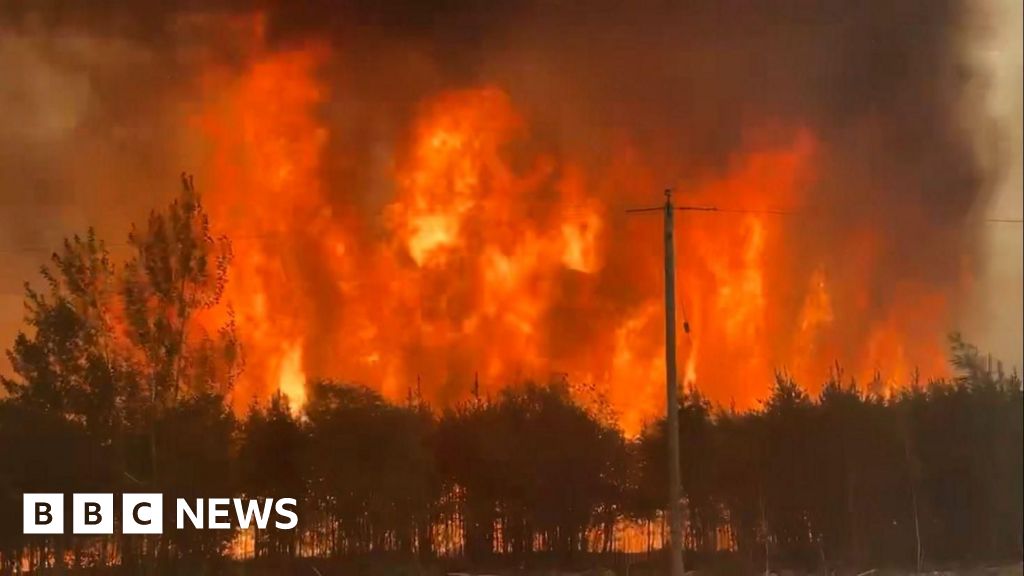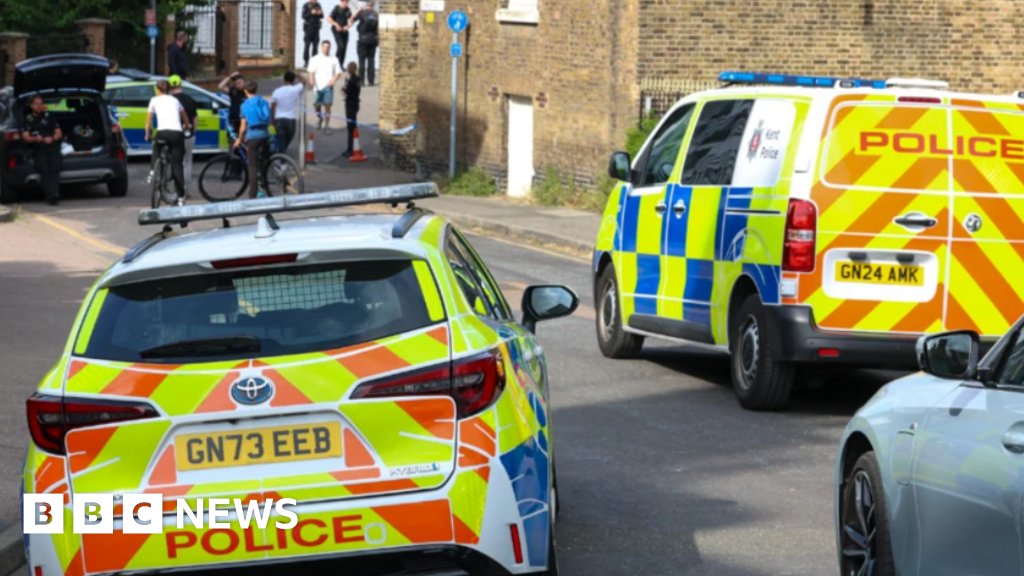BBC News
 Getty Images
Getty ImagesStorm Éowyn unleashed severe gales across several parts of the UK on Friday morning.
Weather warnings are in place and forecasters say more buildings could be damaged, travel is likely to be affected and power cuts are possible.
Red warnings, the most severe category used by the Met Office, have been issued for Northern Ireland and part of Scotland.
What should you do during a storm?
People are advised to stay inside as much as possible and keep internal doors closed.
This is particularly important in areas that have been issued a red warning where gales of up to 100mph (161km/h) are possible – it means flying debris could cause a danger to life.
If you do have to go out, you should avoid walking next to buildings, trees and the sheltered side of walls or fences, in case of collapse.
You should not attempt to repair any damage to your property or possessions while a storm is in progress.
The RSPCA advises bringing all animals inside and ensuring you have sufficient food, bedding and fresh water.
Listen out for bad weather warnings on local radio and TV, and check government and news websites for the latest updates.
What to do if there is a power cut?
If you lose electricity you should switch off all non-essential appliances but leave a light on so you know when the supply returns.
You can report a power cut online or by calling 105, which is a free service in England, Scotland and Wales.
Alternatively, you can find the details of your energy network operator by using this postcode search tool.
They may put you on a priority list for assistance if you have medical equipment in your home that needs electricity.
If you can smell gas and suspect there is a leak in your home, you can report it by ringing 0800 111 999.
Can you drive during weather warnings?
Do not drive unless your journey is unavoidable, and steer clear of flooded or exposed routes such as bridges or high open roads.
If you have to drive, make sure you have essential supplies such as warm clothing, food, drink, blankets and a torch, and carry a fully-charged phone.
Drive slowly, and be especially cautious around high-sided vehicles and when overtaking. Give other vehicles extra room.
Driving during a weather warning, including a red category one, does not automatically invalidate your car insurance but it may make a claim more difficult.
An insurer might try to prove negligence, such as driving on a road when advised not to, and refuse the claim.
 PA Media
PA MediaWhat can you do to protect your home?
There are a number of steps you can take to protect your property. These include:
- Securing loose objects outside a property such as bins, ladders, trampolines and outdoor games, garden furniture and tools
- Checking fences and roof tiles are secure
- Clearing guttering of debris such as moss and leaves
- Closing and fastening external doors and windows
- Securing storm shutters, if they are fitted to your home or business
- Parking vehicles in a garage, if you have one; otherwise ensuring they are as far away as possible from buildings, trees and fences
- Closing and securing loft trapdoors
- Making sure you know how to turn off your gas, electricity and water in case you have to leave your home, for example because of flooding
- Charging mobile phones and any other critical devices including battery packs
If you are in a flood-risk area, try to move valuable or essential items upstairs or store them as high as you can on the ground floor.
In you are trapped by floodwater, you should go to the highest level of the building you are in.
Avoid attic spaces due to the risk of being trapped by rising water, and only go onto the roof if absolutely necessary. Call 999 and wait for help.
What should you do after a storm?
If you have suffered damage to your property or possessions you should:
- Not do anything that puts you or your household at risk
- Be especially careful around any exposed electrical or telephone cables
- Only return to your home or business after a storm when it is safe to do so
- Contact your insurance company as soon as possible: most have 24-hour emergency helplines, which can advise on next steps and arrange repairs
- If necessary, arrange temporary emergency repairs to stop any damage getting worse. Tell your insurer and keep receipts, as this will form part of your claim
- Unless they are dangerous, don’t throw away damaged items without discussing it with your insurer, in case they can be repaired
- Remember it can take weeks or even months for a property to fully dry out after storm damage, so you may need to wait some time before redecorating
A common misconception is that homeowners are responsible for the fences on the left of their property.
There is no general rule about which fence belongs to whom so homeowners should check their title deeds to see which boundaries they own.

















Leave a Reply